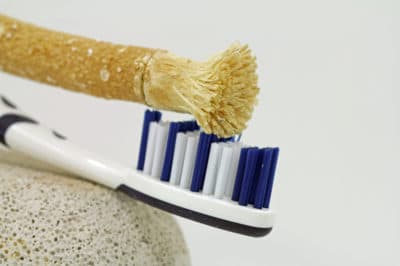Description
The Middle Eastern mustard tree (Salvadora persica) reaches a maximum height of about 25 feet. It is considered an evergreen shrub and it can be as wide as it is tall. The branches come off low and commonly hang to the ground in a large skirt. The young oval leaves are dark green in color and lighten with age.
The trunk of the tree is upright or crooked and rarely over 1 foot in diameter. The white bark appears cracked and grows in columns up the main trunk. Small yellow flowers grow in tendrils. They are fragrant and used medicinally. The flowers give way to inconspicuous berries that are purple in color and edible.
Uses
The seeds of the mustard tree, while not the same seeds used to make the condiment mustard, are highly valued as a mild and spicy flavor. The various types of mustard tree seed are used to flavor pickles, deviled eggs, baked beans, and succotash. They are considered the smallest seed in the world.
Mustard tree leaves are a favorite snack for livestock and often grown by farmers for this reason. The young most tender leaves are eaten by people and have a flavor reminiscent of mustard. The flowers and fruits carry a pungent flavor and are eaten raw, dried, or cooked.
Another common name for the mustard tree is ‘toothbrush tree.’ This originated from the fact that young branches and small roots have been cut and chewed to clean teeth for centuries. The peelu contained within the inner wood of the branches is used in soda-free toothpaste.
Additional uses of the mustard tree include:
- Source of Oil
- Varnish
- Firewood and Soft Timber
- Soil Stabilization
- Saline Soil Remediation
- Medicine
Cultivation
Grow Salvadora persica in USDA hardiness zones 9-11. They require lots of overhead sunlight and heat. Seeds must be soaked long enough that the pulp is removed in order to germinate. This takes up to three days. The tree may also be propagated by cuttings.
Seed harvest is done 3 months after the tree sets seed. This is when the oil content is at its highest. Young leaves are harvested at any time.
